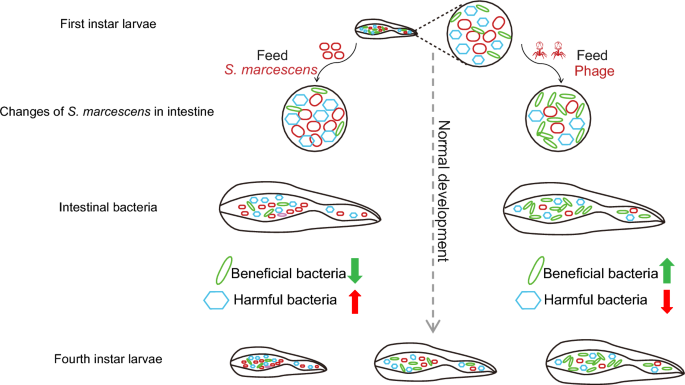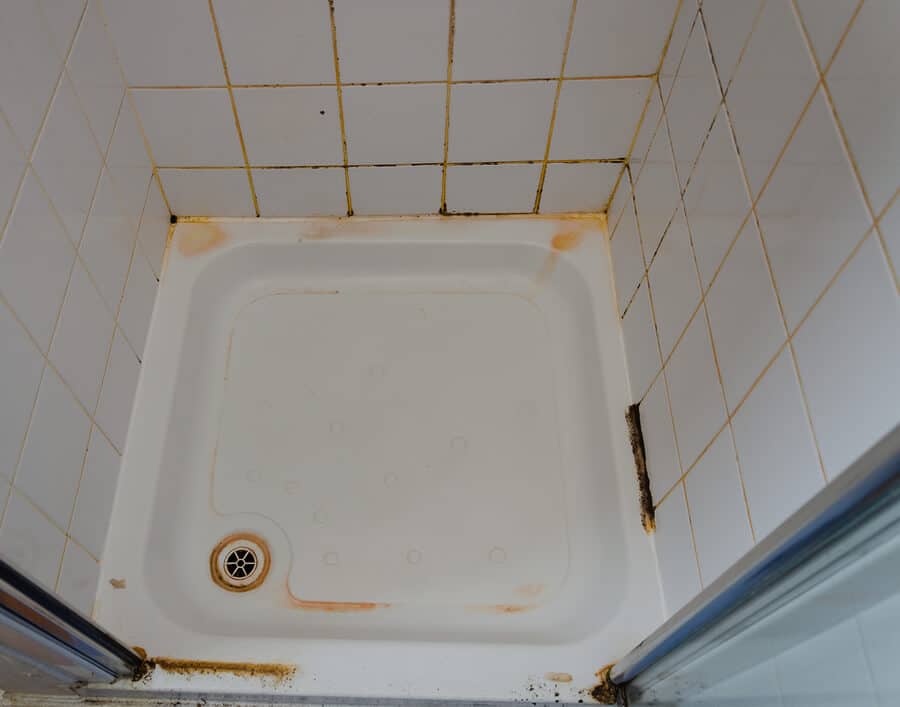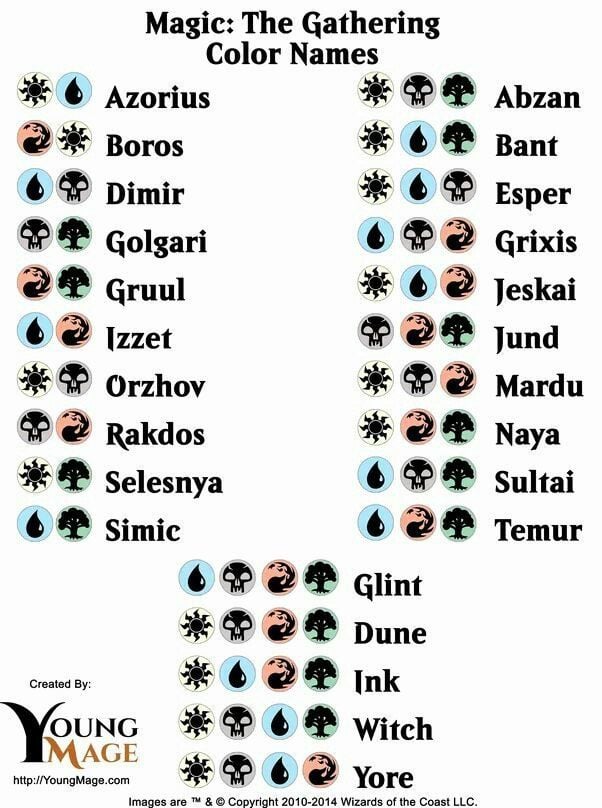Is Serratia Marcescens Harmful: Hidden Dangers Unveiled
Imagine spotting a mysterious pink or red stain lurking in your bathroom or kitchen. It’s not just a harmless splash of color; it could be Serratia marcescens.
You might wonder, “Is this strange bacteria harmful to me and my family? ” Understanding the potential risks associated with Serratia marcescens is crucial for maintaining a safe and healthy home environment. You’ll uncover the secrets behind this elusive microorganism, learn how it can impact your health, and discover effective ways to protect yourself and your loved ones.
Stick around, because what you learn next could change the way you view those seemingly innocent stains forever.

Credit: archive.kuow.org
What Is Serratia Marcescens?
Serratia Marcescens is a type of bacteria. It belongs to the Enterobacteriaceae family. This microorganism is commonly found in the environment. It thrives in damp and moist places. You might spot it in bathrooms or kitchens.
The bacteria often appear as a pink or red slimy film. It grows on soap dishes, shower curtains, and toilet bowls. Many people encounter it without knowing its name. Recognizing it is the first step in understanding its effects.
Serratia Marcescens is a gram-negative bacterium. This means its cell wall structure is complex. The bacteria can survive in various conditions. It is opportunistic, meaning it can cause infections. It is often present in hospitals or healthcare facilities.
Serratia Marcescens can also be found in soil and water. It is part of the natural microbial world. This bacterium feeds on decaying organic matter. It can contribute to the decomposition process. Its presence is not always harmful.
Where Is Serratia Marcescens Found?
Serratia Marcescens is common in moist environments. It grows well in bathrooms and kitchens. It appears as pink or reddish stains. These stains are often found around sinks and showers.
In hospitals, the bacterium is found in medical equipment. It can contaminate catheters and IV lines. It thrives in places where it can access moisture. It sometimes colonizes respiratory and urinary tracts.
How Does Serratia Marcescens Affect Humans?
Serratia Marcescens can cause infections. It is linked to respiratory issues in some cases. It may lead to urinary tract infections. People with weak immune systems are at higher risk.
The bacteria can enter the body through wounds. It may infect surgical sites. Its presence in hospitals is concerning. Healthcare settings need strict sanitation measures.
Common Sources Of Exposure
Serratia Marcescens, found in water and soil, can be harmful, especially in hospitals. It often spreads through contaminated surfaces, medical equipment, and poor hygiene. People with weakened immune systems are more vulnerable to infections caused by this bacterium.
Understanding the common sources of exposure to Serratia marcescens can be crucial for safeguarding your health. This bacterium, often recognized by its reddish-pink hue, can be found in various environments. While it might seem harmless in small amounts, its presence in certain areas can be concerning. Knowing where you’re most likely to encounter it helps in taking preventive measures and maintaining a safe environment.Water And Soil
Serratia marcescens can thrive in water and soil, often unnoticed. It’s not uncommon to find it in showerheads or bathroom tiles due to the moist conditions. Have you ever noticed pink rings in your toilet bowl or bathtub? That might be a sign of this bacterium. In the soil, it’s less visible but can be present in garden beds. If you’re an avid gardener, wearing gloves can reduce your exposure. Always wash your hands thoroughly after handling soil, especially before eating or touching your face.Healthcare Settings
Hospitals and clinics are vigilant about controlling Serratia marcescens, yet it can still pose a risk. This bacterium can be found in catheter tubes, IV lines, and other medical equipment if not sterilized properly. If you’re visiting a healthcare facility, you might notice staff rigorously cleaning surfaces to prevent its spread. Patients with weakened immune systems are particularly vulnerable. If you’re caring for a loved one in a hospital, ensure they follow hygiene practices and watch for any signs of infection. Your proactive approach can make a significant difference in their recovery.Household Environments
Your home can unintentionally become a breeding ground for Serratia marcescens. Kitchens and bathrooms are primary areas due to the constant presence of water and organic matter. Have you checked the seals of your refrigerator or dish drainer lately? They can harbor this bacterium if not cleaned regularly. Using a mild bleach solution can help keep these areas bacteria-free. Regularly washing sponges and dishcloths also reduces the risk. Are there specific cleaning habits you can improve to protect your household? Small changes can lead to a healthier living space.Health Risks And Infections
Serratia marcescens can cause infections, especially in hospitals. It often affects the urinary and respiratory systems. This bacterium is dangerous to those with weak immune systems, increasing health risks significantly.
Serratia marcescens is a type of bacteria that can pose several health risks, particularly for individuals with weakened immune systems. While it’s not as commonly discussed as other bacteria, understanding its potential to cause infections is crucial. You might encounter it in hospitals or other healthcare settings where it can lead to serious health complications.Respiratory Infections
Serratia marcescens can cause respiratory infections, especially in hospitalized patients. These infections can range from mild to severe, affecting the lungs and airways. If you or a loved one experiences persistent coughing, wheezing, or shortness of breath in a healthcare setting, it might be worth considering this bacterium as a possible culprit. Imagine visiting a friend in the hospital, and they suddenly develop breathing difficulties. The anxiety is real, and knowing about potential risks can be empowering. Being aware of the symptoms can prompt quicker medical intervention.Urinary Tract Infections
This bacterium can also lead to urinary tract infections (UTIs), particularly in catheterized patients. UTIs caused by Serratia marcescens can be tricky, often requiring specific antibiotic treatments. Have you ever had a UTI that just wouldn’t go away? It’s frustrating and uncomfortable. Knowing the potential causes, like Serratia marcescens, can help you discuss treatment options with your healthcare provider.Wound Infections
Serratia marcescens is known to infect wounds, especially surgical or open wounds in hospital settings. These infections can delay healing and lead to further complications. Think about a time when a small cut took longer to heal than expected. Now imagine that wound being in a hospital environment with a bacteria like Serratia marcescens lurking around. It highlights the importance of rigorous hygiene practices in healthcare facilities. Are you now more curious about how bacteria can impact our health, particularly in places where we expect to be healed? Your awareness can make all the difference in early detection and treatment.
Credit: parasitesandvectors.biomedcentral.com
Vulnerable Populations
Serratia marcescens, a bacterium often found in damp environments, poses significant threats to certain groups. While it might be harmless to many, some populations are particularly vulnerable to its harmful effects. Understanding who these individuals are can help in preventing infections and maintaining health.
Immunocompromised Individuals
If your immune system is compromised, Serratia marcescens can pose a serious threat. This group includes individuals undergoing chemotherapy, living with HIV/AIDS, or taking medications that suppress immunity.
Imagine battling a cold but it never goes away. For someone with a weakened immune system, even a minor infection can escalate quickly. Regular check-ups and vigilant hygiene can be your defense shield.
Are you ensuring your environment is clean and safe from potential bacterial threats?
Hospitalized Patients
Hospitals, ironically meant for healing, can be breeding grounds for Serratia marcescens. With numerous patients and procedures, the risk of infection rises.
Consider the stress of recovering from surgery, only to face a bacterial infection. Hospital staff must prioritize cleanliness and quick response to outbreaks to protect patients.
If you or a loved one is hospitalized, ask about infection control measures. Your advocacy can make a difference.
Elderly And Infants
The elderly and infants have something in common: their susceptibility to infections. With weaker immune systems, they are easy targets for Serratia marcescens.
Picture your grandmother or a newborn fighting off a strong bacterial invasion. For them, prevention is crucial. Regular handwashing and sanitized surroundings are essential.
Are you taking steps to safeguard these vulnerable loved ones in your care?
Recognizing these vulnerable groups helps in taking proactive measures. Your awareness can be the key to preventing harmful infections. Always prioritize cleanliness and be vigilant about possible bacterial threats.
Preventive Measures
Serratia marcescens can pose health risks if not managed properly. Understanding preventive measures is crucial in minimizing potential harm. This section highlights essential practices to keep this bacteria at bay, ensuring safety in various environments.
Hygiene Practices
Consistent handwashing reduces bacterial spread. Use soap and water for at least 20 seconds. Sanitizers with at least 60% alcohol can help when soap is unavailable. Regular cleaning of surfaces also prevents bacterial growth. Disinfect high-touch areas like doorknobs, phones, and keyboards frequently. Good hygiene practices are vital in homes and communal spaces.
Hospital Protocols
Hospitals implement strict protocols to minimize bacterial risks. Staff follows rigorous hand hygiene routines to prevent infections. Sterilization of medical equipment is mandatory. Isolation procedures protect vulnerable patients from exposure. Regular monitoring ensures protocols are effective and adhered to. Vigilance is key in maintaining a safe hospital environment.
Water Treatment
Proper water treatment prevents bacterial contamination. Filtration systems remove impurities, including harmful bacteria. Chlorination disinfects water, making it safe for consumption. Regular maintenance of water systems ensures efficiency. Public awareness on water safety practices is crucial. Clean water is essential for preventing health issues linked to bacteria.
Environmental Impact
Serratia marcescens, a bacteria commonly found in damp environments, can be harmful to humans. It can cause infections, especially in people with weak immune systems. Proper hygiene and cleaning practices can help reduce its impact on health.
When considering the environmental impact of Serratia marcescens, it’s crucial to understand both the potential risks and benefits this bacterium presents to nature. Often recognized for its striking red pigment, Serratia marcescens can be found in diverse environments, from soil to water. But how does this vibrant bacterium affect the ecosystems it inhabits?Ecosystem Disruption
Serratia marcescens can disrupt ecosystems by outcompeting native microorganisms. Its rapid growth rate allows it to dominate various habitats, altering the microbial balance. This shift can affect the local flora and fauna, potentially leading to reduced biodiversity. The bacterium’s presence in water systems can be particularly concerning. It may lead to the deterioration of water quality by producing harmful by-products. This, in turn, affects aquatic life and can make water unsafe for human consumption. Are you aware of the impacts such disruptions can have on local communities? Reduced biodiversity and water quality can ripple through ecosystems, impacting agriculture, fishing, and other human activities.Bioremediation Potential
Interestingly, Serratia marcescens also holds promise in bioremediation. This process uses microorganisms to clean up polluted environments, and Serratia’s robust nature makes it a good candidate for this role. One of its most notable abilities is to degrade certain pollutants, such as pesticides and industrial waste. This can help restore contaminated sites, turning harmful environments into habitable spaces again. Imagine a polluted river being rejuvenated through the efforts of tiny, vibrant bacteria. However, harnessing this potential requires careful management. Balancing Serratia’s benefits with its disruptive capabilities is key to ensuring environmental health. Would you consider using bacteria as allies in cleaning up our world?Research And Future Directions
Serratia marcescens is a bacterium causing concern in medical fields. It is known for its striking red pigment and opportunistic infections. Researchers focus on its behavior and treatment. New studies aim to understand its resistance and develop innovative solutions.
Antibiotic Resistance
Antibiotic resistance in Serratia marcescens is a growing threat. It adapts quickly to traditional treatments. This makes infections harder to control. Scientists study how it resists antibiotics. They aim to identify patterns and find weaknesses.
Understanding resistance helps in developing better treatments. It guides the creation of new antibiotics. Researchers also explore alternate methods to combat this resistance.
Innovative Treatments
Innovative treatments are crucial to fight Serratia marcescens. Scientists explore natural compounds and bioengineering. These methods show promise in lab tests. They aim to create more effective treatments with fewer side effects.
Phage therapy is another area of interest. This involves using viruses that target bacteria. Phages can be an alternative to antibiotics. Research in this field is gaining momentum.
The future of treating Serratia marcescens relies on these studies. Continued research can lead to breakthroughs. Effective treatments can reduce infections and improve patient outcomes.

Credit: www.notlawaterauthority.org
Frequently Asked Questions
What Is Serratia Marcescens?
Serratia Marcescens is a type of bacteria often found in damp environments. It is known for its red pigmentation. This bacterium can be present in soil, water, and bathroom surfaces. It is opportunistic and can cause infections, especially in hospital settings.
Can Serratia Marcescens Cause Infections?
Yes, Serratia Marcescens can cause infections, particularly in hospital patients. It may lead to urinary tract infections, respiratory infections, and bloodstream infections. People with weakened immune systems are more susceptible. Prompt medical attention is crucial to manage and treat these infections effectively.
How Does Serratia Marcescens Spread?
Serratia Marcescens spreads through contact with contaminated surfaces, water, or medical equipment. It thrives in moist environments, like bathrooms and hospitals. Proper hygiene and cleaning can help prevent its spread. Healthcare settings should follow strict protocols to minimize infection risks.
Is Serratia Marcescens Harmful To Humans?
Serratia Marcescens can be harmful, especially to those with weakened immune systems. It can cause serious infections if not treated promptly. Healthy individuals might experience mild effects. Preventive measures and proper treatment can minimize its harmful impact.
Conclusion
Serratia Marcescens can cause health issues in certain conditions. It thrives in damp environments, often unnoticed. Regular cleaning can help reduce its presence. Infections from this bacteria are usually treatable with antibiotics. Early detection is crucial for effective treatment. Maintaining good hygiene can prevent many problems.
It’s important to be aware of its potential risks. Always consult healthcare professionals for concerns. Stay informed and take necessary precautions. Knowledge empowers us to make safe choices. Understanding Serratia Marcescens helps protect health. Keep your surroundings clean and stay proactive.
Health is always a priority.






